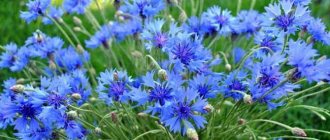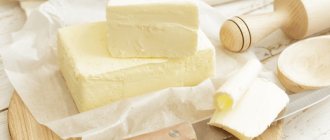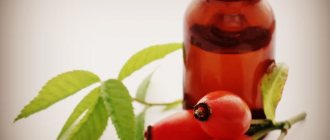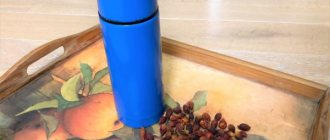In September, a variety of gifts from nature appear on our table, which not only taste excellent, but also have a lot of useful and healing properties. Dogwood can rightly be called one of these autumn gifts of nature.
This delicious crimson-red berry appears on store shelves and markets in late August - early September and contains a record amount of vitamin C: dogwood contains more ascorbic acid than rosehip, orange, lemon or currant.
The fact that dogwood is not only a tasty, but also a healthy berry was known back in ancient times. The ancient Romans and Greeks often picked the still green and unripe dogwood berries and simply salted them according to the same principle as green olives are now salted. People who lived in ancient times used not only fruits, but also wood, which is particularly durable. Dogwood wood was used to make spears, arrows and sword handles. During the First World War, dogwood was successfully used to combat scurvy.
What is dogwood? What chemical composition and what beneficial properties does this bright red berry have for the human body? Does dogwood help with diabetes? What contraindications does it have? How to properly collect and dry dogwood? In this article we will discuss issues related to the benefits and harms of dogwood for the human body.
✔ Dogwood: a miracle berry that angered Shaitan himself!
“Healers will not be needed where the dogwood grows!” - says a wise Caucasian proverb.
And there is nothing strange or surprising in this, because the berries of this plant are included in many folk medicine recipes, which have been helping to get rid of a wide variety of ailments and illnesses for decades. The Chinese use dogwood for rejuvenating procedures, the Indians pickle it in a special brine and serve it as a spicy spice, and the Swiss mix it with coffee beans and prepare a tasty and invigorating drink rich in vitamins.
Dogwood (other names: “devil’s berry”, “red doctor”, “shaitan’s berry”, “dogwood”, “Crimean legend”, “dogwood”) is one of the most ancient plants on Earth, the seeds of which were discovered by archaeologists during excavations of settlements Neolithic times in the territory of modern Switzerland. The age of the dogwood seeds found there is 5 thousand years.
There are many legends associated with dogwood. One of them says that when God decided to give trees, shrubs and flowers to animals and people, the Shaitan wanted God to give him the dogwood. Why? The thing is that the dogwood blossoms before all other plants, so the evil spirit thought that the dogwood bears fruit before everyone else.
Shaitan was very happy when God gave him the dogwood tree. Dreaming of how he would collect dogwood berries before all other living creatures and sell them at exorbitant prices on the market, Shaitan did not notice that apricots, peaches, plums and apples had already ripened, but the dogwood remained sour and hard. The evil spirit got tired of waiting, he threw the dogwood to the ground and walked away, and after a while the dogwood ripened. This angered Shaitan so much that after each rich dogwood harvest, people faced a cold and long winter.
Dogwood (translated from Turkic as “red”) is a plant in the form of a shrub or tree belonging to the family of the same name. Dogwood blooms with beautiful bright yellow flowers and is an excellent honey plant. Dogwood, whose height is 5-7 meters, grows in the south of Russia, France, Moldova, Italy, Ukraine, the countries of North America and Central Asia, China and Japan. Dogwood fruits ripen 5-6 months after flowering.
Dogwood berries are small in size and oblong in shape. Some dogwood varieties have spherical or pear-shaped fruits. Dogwood berries resemble pears in appearance. They have smooth and strong skin of different shades (from yellow, orange, coral and light red to dark purple and almost black), a dense and fleshy structure and a large inedible oblong-shaped pit.
One dogwood berry weighs about 4-5 grams. The juicy pulp makes up approximately 75-85% of the total weight of the fruit. The taste of dogwood is astringent, sweetish-sour, tart, causing a pleasant sensation. Dogwood fruits can be consumed fresh, boiled, pickled or dried. Compotes, jams, syrups and various drinks are often prepared from dogwood berries.
What is dogwood?
Content:
- What is dogwood?
- Health Benefits
- Chemical composition of berries
- Warning
- How to use dogwood
- How to grow dogwood
This shrub entered human life several thousand years ago. The appearance of the plant is usually associated with Eastern Europe and Asia Minor, from where ancient merchants delivered tasty and juicy berries to other parts of the world. Botanists say there are more than 50 species of dogwood [1]. More often this crop forms into a shrub, but under certain conditions it can form into a strong tree reaching up to 8 meters in height. This culture is especially widespread in the Crimea and the Caucasus. It is more often found in mountainous areas, but often grows on the outskirts of forests and river banks. It is also used as an ornamental crop. [2]
The oblong drupes resemble slightly flattened currants or cranberries with smooth skin, juicy pulp and a hard seed inside. Ripe berries are often red, but can be purple and even almost black. The sweet and sour taste and unique aroma are due to the rich content of essential oils in dogwood, which at one time made the berries one of the most popular. Today they are consumed raw, candied, canned, and dried.
Nowadays, the number of supporters of healthy and healthy food is only growing. People remember the healing fruits that regularly appeared in the diet of our great-grandmothers. Modern man also looked at the dogwood tree in a new way. In recent years, this plant has been more often used as an ornamental. Its strong and dense branches are ideal for forming a lush hedge, which looks especially elegant during the flowering period of the bush. This crop looks no less beautiful in late summer and autumn, when the bush is strewn with berries of all shades of red - from scarlet to deep burgundy, which also have many therapeutic properties.
Chemical composition and calorie content of dogwood berries
Dogwood berries are low-calorie foods. 100 g of fresh fruit contains about 45-50 calories.
Nutritional value of dogwood (per 100 g of fresh berries):
- carbohydrates – 9 g;
- proteins – 1 g;
- fats – 0 g;
- water – 85 g;
- dietary fiber – 1.5 g.
Dogwood berries contain the following vitamins:
- vitamin B1 (thiamine, 0.047 mg),
- vitamin B2 (riboflavin, 0.024 mg),
- vitamin B5 (pantothenic acid, 0.21 mg),
- vitamin B6 (pyridoxine, 0.036 mg),
- vitamin B9 (folate, 50 mcg),
- vitamin C (ascorbic acid, 25 mg),
- vitamin E (alpha tocopherol, TE, 0.15 mg),
- vitamin K (phylloquinone, 7.9 mcg),
- vitamin PP (NE, 0.166 mg).
Dogwood contains the following macro- and microelements:
- potassium (363 mg),
- chlorine (1.2 mg),
- calcium (58 mg),
- phosphorus (34 mg),
- silicon (4 mg),
- sulfur (0.7 mg),
- magnesium (26 mg),
- sodium (32 mg),
- aluminum (221 mcg),
- zirconium (6.3 mcg),
- boron (59.6 mcg),
- zinc (0.114 mg),
- vanadium (0.02 µg),
- chromium (1.2 mcg),
- iron (4.1 mg),
- fluoride (15.2 mcg),
- iodine (1.2 mcg),
- strontium (12.7 µg),
- cobalt (1 mcg),
- selenium (2 mcg),
- lithium (3 mcg),
- rubidium (82 mcg),
- manganese (0.5542 mg),
- nickel (7.6 mcg),
- copper (0.6 mcg),
- molybdenum (15 mcg).
In addition to vitamins and minerals, dogwood contains starch and dextrins (0.1 g), sugars (mono- and disaccharides, 9 g), saturated fatty acids (0.213 g), omega-6 fatty acids (0.119 g), essential oils, pectins, tannins, nitrogenous and coloring substances, phytoncides.
Nutritional value per 100 grams
Dogwood fruits contain up to 10% sugar. Among carbohydrates, glucose and fructose predominate, which are easily absorbed by the human body.
Organic compounds necessary for human life in 100 grams of dogwood berries and fruits, as some consumers say, are distributed as follows:
| Name | How much in 100 g | % of daily requirement |
| Squirrels | 1 g | 1,09 |
| Carbohydrates | 9 g | 6,43 |
No fat, about 2 grams of dietary fiber, the rest is water.
Beneficial properties of dogwood for the human body
Since dogwood contains many substances vital for the human body, it is not surprising that this tasty berry has a lot of useful properties and has a beneficial effect on the human body.
Dogwood berries are a tasty food product of plant origin that:
- has a tonic effect on the body;
- has diuretic, mild laxative, antipyretic, wound-healing and choleretic properties;
- naturally removes waste and toxins from the body;
- reduces the level of urea and oxalic acid in the body;
- normalizes the functioning of the gastrointestinal tract;
- normalizes stool;
- helps with diarrhea;
- relieves stomach discomfort during the main meal;
- relieves inflammatory processes in the liver;
- improves the functioning of the cardiovascular system;
- activates the process of hematopoiesis;
- eliminates oral infections;
- helps relieve gum inflammation and toothache;
- helps with poisoning with heavy metal salts;
- helps to lose excess weight;
- lowers blood pressure in hypertension;
- helps with rheumatism;
- is an anti-inflammatory, antiviral and bactericidal agent;
- strengthens the body's defense mechanisms and increases the level of immunity;
- normalizes metabolic processes in the body;
- promotes healing of purulent wounds;
- fights certain kidney diseases;
- promotes better absorption of iron by the body;
- helps with anemia;
- improves appetite;
- lowers blood sugar levels;
- fights neuroses and headaches;
- strengthens the nervous system;
- helps fight stress;
- improves the functioning of the pancreas and increases the level of its enzyme activity;
- prevents the development of sclerosis and is an excellent prevention of other sclerotic changes;
- fights vitamin deficiency;
- helps with varicose veins;
- strengthens the walls of blood vessels;
- fights gout;
- strengthens capillaries and increases their density;
- relieves swelling;
- fights hemorrhoids;
- improves concentration;
- stimulates brain activity;
- fights chronic fatigue.
Recipes for cooking
Below are some simple recipes for making dogwood.
Check out the use of dogwood for the treatment of hemorrhoids.
Decoction
The decoction is prepared from fresh raw materials. To do this, pour 200 grams of berries with seeds into 400 ml of water and bring to a boil, then cool completely. If desired, you can add a little honey or sugar to the cooled liquid, but it is better to consume it in its natural form. The decoction will be especially useful for students and schoolchildren during periods of active study, during seasonal flu epidemics, or as a regular tasty drink (replacement for tea or coffee).
Infusion
An infusion of dried dogwood fruits is prepared as follows: 100 grams of raw material is washed, poured with 200 ml of boiling water and sealed in a thermos for 30 minutes. The resulting infusion is drunk as tea, preferably before meals.
- Useful properties of this drink:
- disperses bile;
- helps cleanse the bladder and kidney ducts;
- normalizes urination;
- reduces pain and spasms during inflammation of various types.
Kissel
For jelly you will need 400 grams of dogwood berries, 1 tbsp. l. potato starch, 2 tbsp. l. sugar and 1000 ml of water. The preparation is very simple: when the water boils, add the berries and sugar, let it boil well and gradually add potato starch, stirring constantly. The thickness of the jelly depends on the amount of starch. The amount of sugar also varies according to taste.
Video: dogwood jelly
Beneficial properties of dogwood for men
Dogwood has pronounced anti-scorbutic properties, so it is included in the daily diet of long-distance sailors and astronauts!
Dogwood is an excellent remedy for strengthening potency and combating male impotence. That is why many experts advise those representatives of the stronger sex who want to preserve men’s health for as long as possible and not experience any problems with potency to pay attention to this tasty and healthy food product.
Dogwood berries not only perfectly strengthen potency, but also successfully fight many diseases of the genitourinary system, which many men after 35-40 years know firsthand.
If a man eats a dozen dogwood fruits a day, then very soon he will forget about problems with potency and improve the functioning of his genitourinary system!
Collection and storage
The berries ripen within 2-3 months, so it is better to choose early varieties for planting. Ripening is uneven. Ripe fruits do not hang for a long time and fall off. Considering that they are able to reach the condition when picked, it is allowed to pick them slightly unripe.
Stored at a temperature of about 5°C for 3-4 weeks. The container must be ventilated.
Useful properties of dogwood for women
Dogwood also has a beneficial effect on the female body. It moisturizes, tones and cleanses the skin of rashes, blackheads and pimples, restores its former beauty and youth, increases elasticity, gives a radiant and rested look, fights wrinkles, oily shine and blackheads. Berries help get rid of furunculosis, dermatitis, eczema and many other skin problems that so often arise among the fair sex.
To improve the condition of your skin and boost your immunity, you need to eat a handful of dogwood fruits every day or drink dogwood juice. In cosmetology, various scrubs, creams and masks made from the pulp of dogwood fruits are widely used.
Dogwood speeds up metabolism and helps the body remove waste and toxins, so it should be included in the diet of those women who want to lose weight and get their figure in order. But do not forget that dogwood berries increase appetite, so you need to monitor the amount of food consumed per day.
Benefits of dogwood root and leaves
The properties of the leaves are expressed by the effects:
- diuretic;
- astringent;
- bactericidal;
- choleretic.
The leaves can be used to make infusions or squeeze juice. Freshly squeezed juice from dogwood leaves helps relieve the symptoms of conjunctivitis. To do this, it is enough to drip two or three drops of the squeeze inside the eyes.
An infusion of leaves and twigs is used to treat metabolic disorders. The root is used in therapy:
- arthritis;
- gout;
- rheumatism.
To prepare the infusion, you will need to pour two teaspoons of crushed root with two hundred milliliters of boiling water and boil for at least thirty minutes.
Useful properties of dogwood for children
Since dogwood contains a huge amount of vitamin C and many other vital substances, it has a beneficial effect on the child’s body: it strengthens the immune system and increases the protective functions of the actively growing and developing child’s body. It is especially useful to give dogwood to a child in the spring and autumn, when he can easily become a victim of the flu, colds or any other seasonal viral disease.
Dogwood promotes the growth of the muscular skeleton and bone tissue, therefore it is an indispensable food product in the children's diet. Bright red berries improve appetite in children, have a positive effect on the secretory function of the children's stomach and normalize intestinal flora.
When a child has diarrhea, dogwood jelly made from dried or fresh berries has an excellent effect. This jelly can also be given to those children who have symptoms of gastroenterocolitis. To prepare dogwood jelly, you need to take 200 ml of water and 3 tablespoons of dry (pre-soaked) or fresh dogwood berries. Kissel (70-80 g) is given to children three times a day before meals.
- Experts recommend giving children under 12-14 months no more than 25-30 g of pureed dogwood fruits, provided that the baby does not have any allergic reactions to this product.
- For children from 1 to 3 years old, the dose can be increased to 100 g of pureed berries or seedless fruits,
- and for children from 3 to 6 years old - up to 140-210 g of seedless dogwood.
Biological description
Dogwood is a deciduous, multi-stemmed, unpretentious shrub. It grows in height up to 4-5 meters. The stems of young shrubs have a greenish-yellow tint; with age they turn gray and crack. The crown is dense. The leaves are entire, opposite, simple, green in color, shiny at the top, with appressed scattered hairs. It blooms very profusely and early, from about April or mid-March. The flowers are bright yellow. They are rich in nectar and are an excellent honey plant. From flowering to fruit ripening, it takes 5 to 6 months. The shrub is frost-resistant, but for the winter it is recommended to hill it up with higher soil.
The fruit is an oblong, pear-shaped or spherical drupe (depending on the variety) up to 3 cm in length and weighing 3-6 g. The color of the peel is also varied: red, pink, dark purple, light red, yellow. The pulp is juicy, sweet and sour. The bone is hard, oblong.
Beneficial properties of dogwood for the body of an elderly person
Dogwood berries not only improve blood circulation, but also take a direct part in the prevention of age-related changes in the blood vessels of the brain. That is why experts advise older people to regularly take dogwood fresh or in the form of jelly, jam, compote, etc.
Dogwood has a beneficial effect on the body of elderly people, as it is an excellent antirheumatic agent. In the form of an infusion, dogwood berries help lower blood pressure, which very often becomes a constant companion for older people.
The benefits of dogwood seeds
Fruit seeds contain essential oils and are used in the prevention and treatment of hemorrhoids. Whole ground berries can eliminate the symptoms of the disease within three days.
The effect on the body is expressed by the following effects:
- restorative;
- anti-inflammatory;
- astringent;
- antibacterial;
- wound healing;
- hemostatic.
It is permissible to swallow the seeds whole or grind them into a powder. Even if you don’t grind them, the gastric juice dissolves the hard cores of the fruits.
Beneficial properties of dogwood for diabetes
Many people with high blood sugar want to know whether dogwood can be consumed if they have diabetes. The answer to this question is very simple: it is not only possible, but also necessary.
Dogwood lowers blood sugar levels, therefore it is an excellent antidiabetic agent and is one of those foods that have a low glycemic index.
For people suffering from diabetes, experts recommend regularly drinking the juice of fresh dogwood berries 25-40 minutes before meals. You need to start with 50 g of juice, gradually increasing the dose to 200 g (1 glass).
In case of increased acidity of the stomach, dogwood juice should be diluted with water (50 g of water for every 200-250 g of juice). The duration of the healing course is 10-12 days, then you should take a break for 7-10 days.
At what age can dogwood be given to children?
Dogwood berries must be present in a child’s diet, but only after he reaches 2 years of age. The baby is given 1 berry per day, gradually increasing the number. They strengthen the child's body, providing it with vitamins and other components necessary for its growth.
Medicinal fruits strengthen the child’s immunity, strengthens bone elements, and calms the nervous system. Pediatricians believe that it will be healthier for children to eat not fresh berries, but various jelly, jellies, and milkshakes with the addition of berries.
Does dogwood have any contraindications?
✘ Although dogwood has a lot of beneficial properties, in some cases it is worth refraining from using it. People who have increased acidity of gastric juice should avoid dogwood berries. People who suffer from certain kidney diseases, chronic constipation, gastritis and other diseases of the gastrointestinal tract should not consume dogwood.
✘ Dogwood fruits have pronounced tonic properties, so you should not consume them at night, as overstimulation of the nervous system may cause problems with sleep. Due to its invigorating effect, dogwood should not be consumed by people who suffer from nervous disorders or increased nervous excitability.
✘ Dogwood has diuretic properties, so it should not be consumed by people with certain diseases of the genitourinary system, as this product may harm their health. Individual intolerance is another reason why you need to replace dogwood with some similar food product of plant origin.
✘ Pregnant women and breastfeeding mothers, small children and the elderly should introduce dogwood into their diet with extreme caution. Before starting to use dogwood, these categories of people should definitely consult with a qualified specialist.
In order for dogwood to bring maximum benefits to the body and not cause health problems, it is necessary to observe the measure and not consume the product in large quantities.
FAQ
How to store dogwood?
There are several ways to preserve the properties of the fruit/maximum period:
- refrigerator/no more than twelve days;
- freezer/no longer than a year;
- drying/no longer than one year;
- drying/not longer than one year;
- grinding with added sugar/no longer than one year;
- Sprinkling with sugar/no longer than six months.
Before placing the fruits in the refrigerator, they do not need to be washed; it is better to place them in an airtight container. Freezing allows you to give the berries a sweeter taste, and before putting the product in the freezer compartment, you need to prepare it:
- Rinse;
- dry;
- Place in sealed containers.
Drying and drying allow you to store dogwood in a dry, ventilated area at room temperature, grinding - lower. The fruits can also be placed at the bottom of a storage container, covered with parchment paper and covered with sugar; this option allows you to store the product in conditions of low temperature and humidity (on the balcony, in the basement, in the cellar).
Can dogwood berries be consumed by pregnant women?
During pregnancy and breastfeeding, consumption of the fruits of this garden crop is contraindicated. If you want to introduce such a product into your diet, the expectant mother should first consult with your local gynecologist.
At what age can it be given to children?
Compote with dogwood can be given to children over one and a half years old in the initial amount of no more than a teaspoon. In the absence of individual intolerance in the form of allergic manifestations, you can gradually increase it to one hundred milliliters per day. Children over two years old should not be given more than one fruit; they should start introducing it into their diet with half of one berry.
Possible disruptions in the functioning of the gastrointestinal tract serve as a reason to postpone introducing a child to fruit at an older age - three years and older. Pediatricians do not recommend eating dogwood berries for children who are prone to allergies before the age of three due to the pronounced red color of the fruit.
How many dogwood berries can you eat per day?
To meet the daily requirement for vitamins and minerals, two hundred grams of fresh berries is enough. This amount is recommended by doctors; exceeding it can lead to digestive problems. Quantity restrictions (no more):
- dried dogwood/10 pieces;
- fresh berries/two hundred grams.
How to properly collect or select dogwood fruits?
There are certain rules for collecting, preparing and drying dogwood, without which it will not be possible to preserve the maximum of beneficial vitamins and minerals.
✚ Experts recommend picking dogwood berries no earlier than the end of August - beginning of September, because it is during this period of time that the fruits ripen and accumulate all the vitamins, micro- and macroelements necessary for the body.
✚ Is it possible to collect fallen dogwood berries? It is possible, but they must first be shaken off from adhering dirt or dust. Dogwood is harvested only in dry weather, since wet berries begin to deteriorate and rot very quickly, so it is almost impossible to dry them.
✚ All dogwood should be collected before the beginning of October . If you delay picking and keep the fruits on the bush, then not only will insects eat them and birds will peck them, but the berries will also begin to become covered with rot. Overripe fruits become too juicy, and their skin loses its elasticity and thickness, so such berries are difficult to transport, heat treat and dry.
✚ If you do not collect, but buy dogwood, then you should give preference to ripe and bright red berries with shiny skin without signs of rot or any damage. The fruits should be elastic, but not too hard: when pressed, berries suitable for drying bend slightly.
✚ If the berries do not react in any way to pressure and remain hard, then this indicates that they ripened not on the bushes, but in artificial conditions, and therefore do not have all the range of useful substances that one could count on. Fresh dogwood fruits can be stored in the refrigerator for no more than 10-12 days, and in the freezer for no more than 4 months.
Reviews
According to average statistics from various sites with customer reviews of purchased products, dogwood is recommended by 94% of satisfied consumers. The advantages are accessibility, productivity, lowering blood glucose levels, rapid reduction in blood and blood pressure, disadvantages are a sour note in taste, subtlety of planting, high cost. The average rating of 4.8 points out of a possible 5.0 indicates the benefits of the berry for the human body.
Irina, 35 years old
Four years ago I bought a dogwood to plant. I think the big disadvantage is that within the site it is necessary to have another variety of this garden crop. One plant, if you do not form a crown, can take up all the possible space on a summer cottage, from my point of view. The bushes have already begun to bear fruit and I am pleased with their productivity - if you buy fruits in such quantities as I collect, it will be very expensive. Despite the shortcomings, I still recommend purchasing and using it.
Yulia, 45 years old
Three years ago, doctors at the clinic advised my daughter to include dogwood in her diet to reduce blood glucose levels. We buy berries at the market during the season and store them in the freezer until the next harvest - that is, for a whole year. The whole family loves the taste. I recommend.
Maxim, 40 years old
I learned what dogwood is when I was vacationing in the south in the summer. When I arrived home, I found out that you can also buy it in the local area. I buy when the season comes. It doesn’t come out cheap, but my father noticed that a few berries sharply lowered his blood pressure, so he began freezing it for the winter. I recommend.
How to properly collect flowers, leaves, roots and branches of dogwood?
Dogwood leaves should be collected and dried before they turn yellow or burgundy. Usually the leaves are plucked off during berry picking. Some experts advise collecting leaves before picking berries, since the dogwood bush, having gotten rid of moisture-consuming leaves, will begin to accumulate the maximum amount of useful substances only in the fruits.
Dogwood flowers are collected in late March - early April before the ovary forms. It is during this period that the dogwood blossoms. Do not pick absolutely all the flowers from the bush: leave a sufficient number of flowers for pollination by insects and further fruiting.
Dogwood roots are collected (dug up and dried) after the berries are collected, but before frost occurs. Immediately after collection, the roots must be washed and chopped.
dogwood branches in the spring, since at this time of year they have optimal elasticity and are ideal for use in household and household purposes (weaving baskets, etc.).
How to choose and store the product correctly
In the treatment of various pathologies, different parts of the bush are used - rhizomes, twigs, bark, foliage, fruits and flowers. All components should be collected at different times of the year:
- Rhizome – March or late autumn.
- Bark - in September.
- Foliage – the best period is June or July.
- Berries - immediately after ripening, in September.
After collection, the raw materials must be spread out in an even layer and dried under a tent. To preserve the beneficial characteristics of the berries, it is best to dry them in a dryer or oven. After drying, dogwood can be stored for no more than 36 months. It is best to use cotton or linen bags for this.
Dogwood is not only a tasty, but also a healthy berry that should definitely be present on the table of any person. It has a rich vitamin and mineral composition, which is why it is widely used in folk medicine.
How to properly dry dogwood berries at home?
☑ Drying dogwood berries is the best option for preserving in concentrated form all the beneficial substances and vitamins that make up the fruits of this plant. To dry dogwood, you need to sort through the fruits, pre-washed under running water, remove rotten berries, and then lay them out on a sheet, thick paper, tablecloth or any other dry and clean surface.
☑ Dogwood fruits should be dried in the shade and stirred periodically. The berries should not be exposed to direct sunlight, as they will quickly begin to wrinkle and become very hard. Dried dogwood fruits should be poured into a linen bag and stored in a cool (room temperature) and dry place.
☑ Periodically, the dried dogwood needs to be poured into another bag or some kind of glass container. Sprinkling dried berries will not only saturate them with air, but also prevent the product from becoming damp or rotting. If all conditions are met, dried dogwood berries can be stored for up to two to three years.
Our channel: Yandex Zen
Use in folk medicine
Folk experience in using the gifts of nature suggests that dogwood berries actually treat a large number of diseases. The fragrant and tasty fruit is used not only in treatment, but also in the prevention of colds, anemia (anemia), decreased immunity, and even dystrophy.
Important! Dogwood seeds are considered a surefire remedy for treating hemorrhoids. Healers advise that in case of this illness, swallow 2-3 seeds along with raw berries, and then the disease will recede much faster.
For kidney disease
For kidney disease, dogwood is consumed as an infusion or decoction. The decoction is made from raw berries, but the infusion is made from dried berries. To prepare a decoction, pour 200 grams of dogwood into 400 ml of boiling water, bring to a boil, turn off and let it brew until it cools. After this, it is immediately consumed internally instead of tea. This decoction helps relieve pain in the kidneys, is indicated for urolithiasis, removes salts and toxins, and reduces fever in pyelonephritis (inflammation of the kidneys).
For a cold
For colds, the dosage regimen is the same: the berry decoction is taken orally, like tea. This method of treatment is also good because it is impossible to harm the body with vitamin C: it is not stored for future use, and in case of colds and viral infections it is consumed five times faster. It is advisable to stay at home during treatment, since the drink has a strong diuretic and diaphoretic effect.
Did you know? Dogwood seeds, dried and ground into powder, are used as a substitute for instant coffee. This drink is much healthier, and the aroma and taste are almost indistinguishable from coffee.
Disease Prevention
To prevent diseases, experts advise eating berries during the season. You can also freeze the fruits of the dogwood tree for the winter, prepare compotes from them, and add them to tea. Throughout the year, the body will need vitamin support, and in winter, imported fruits contain significantly less of all useful substances than local ones. It is the dogwood that will come to the rescue in this situation.
By the way, jam made from this aromatic berry is no less valuable than the raw or frozen product.










